The month of February is a time when many communities pause and celebrate the great contributions made by African Americans in history. At Lee & Low we like to not only highlight African Americans who have made a difference, but also explore the diverse experiences of black culture throughout history, from the struggle for freedom in the South and the fight for civil rights to the lively rhythms of New Orleans jazz and the cultural explosion of the Harlem Renaissance.
We put together a list of titles – along with additional resources 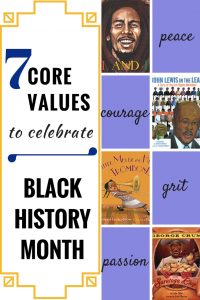 – that align with 7 core values and
– that align with 7 core values and
themes to help you celebrate both Black History Month and African American culture all 365 days of the year.
It’s important to remember that heritage months, like Black History Month, can encourage a practice of pulling diverse books that feature a particular observed culture for only one month out of the year. To encourage a more everyday approach, we developed an 8-step checklist for building an inclusive book collection that reflects the diversity of the human experience. Teaching Tolerance also offers some helpful solutions to connect multicultural education with effective instructional practices and lists insightful “dos and don’ts” for teaching black history that are applicable to any culturally responsive curriculum or discussion.
How do you celebrate during Black History Month? Or, better yet, how do you help children discover the cultural contributions and achievements of black history all year long? Let us know in the comments!
Perseverance, Determination, & Grit
Leadership & Courage
Teamwork & Collaboration
Responsibility & Commitment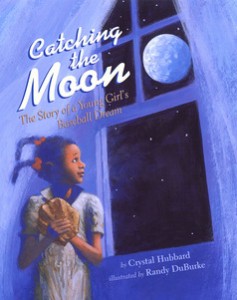
Optimism & Hope
Compassion & Love
Passion & Pride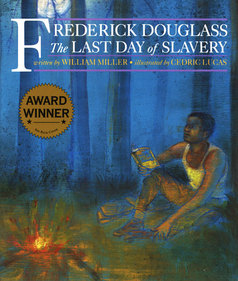
Discussion questions when reading and learning about core values:
- How does/do the character(s) show (core value)?
- What positive effects are associated with having/showing (core value)?
- How do you show (core value)?
- How can you work towards having/showing (core value)?
- What core values do you think are important to apply in our classroom? Why?
Further reading on teaching core values with students:
Looking for additional resources for teaching Black History? Check out these lesson plans, videos, and tips:
 Veronica has a degree from Mount Saint Mary College and joined LEE & LOW in the fall of 2014. She has a background in education and holds a New York State childhood education (1-6) and students with disabilities (1-6) certification. When she’s not wandering around New York City, you can find her hiking with her dog Milo in her hometown in the Hudson Valley, NY.
Veronica has a degree from Mount Saint Mary College and joined LEE & LOW in the fall of 2014. She has a background in education and holds a New York State childhood education (1-6) and students with disabilities (1-6) certification. When she’s not wandering around New York City, you can find her hiking with her dog Milo in her hometown in the Hudson Valley, NY.
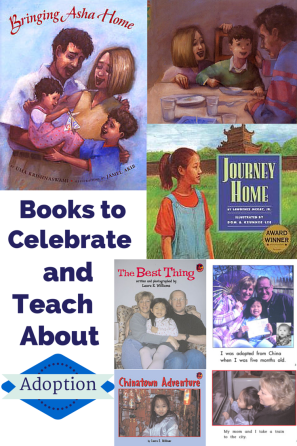
National Adoption Day this November 22 and National Adoption Month this November afford a time to share experiences and reflect on families. Whether you have students who have been adopted or are part of a family considering adopting a child into your home, all children can benefit from learning about adoption. Children are very curious about each other’s families, quick to categorize into groups, and intent to define what makes a family, well, a family.
Picture books provide a medium to discuss, celebrate, and learn about adoption and exploring the definition of “family.”
Book recommendations:
Bringing Asha Home

Journey Home

The Best Thing

Chinatown Adventure

Discussion Questions during and after reading:
- What does “family” mean to you? How might the word mean something different to people?
- What does it mean to be adopted? What might be some challenges for a family with an adopted child or for a child who is adopted? What might be some benefits for a family who adopt a child or for a child who is adopted?
- How is this character’s family similar to and different from your own family?
- How do this character and family share and have fun together? What do you enjoy doing with your siblings and family members?
- How does the character feel at the beginning, middle, and end of the story? How does the main character change from the beginning to the end of the story?
- How would you describe this character’s relationship with his/her parent in the story?
Activities:
- Learn more about the country from which the character is adopted. On which continent is the country located? What countries border this country? What language is spoken there? How many people live in that country? Who are some famous people from that country? Find a recipeof a food from this country to make.
- Share and reflect on this list of famous adoptees or adopters from TeacherVision by Beth Rowen.
- Draw a family portrait of your own family.
- Write a paragraph describing what makes your family unique and why you are proud of your family.
Further reading about adoption:
 Jill Eisenberg, our Senior Literacy Expert, began her career teaching English as a Foreign Language to second through sixth graders in Yilan, Taiwan as a Fulbright Fellow. She went on to become a literacy teacher for third grade in San Jose, CA as a Teach for America corps member. She is certified in Project Glad instruction to promote English language acquisition and academic achievement. In her column she offers teaching and literacy tips for educators.
Jill Eisenberg, our Senior Literacy Expert, began her career teaching English as a Foreign Language to second through sixth graders in Yilan, Taiwan as a Fulbright Fellow. She went on to become a literacy teacher for third grade in San Jose, CA as a Teach for America corps member. She is certified in Project Glad instruction to promote English language acquisition and academic achievement. In her column she offers teaching and literacy tips for educators.
Filed under:
Common Core State Standards,
Educator Resources,
Holidays and Celebrations Tagged:
Adoption,
children's books,
diversity,
Educators,
holidays,
multicultural books,
Multiracial,
Reading Aloud,
reading comprehension,
Transracial adoption 

Celebrate architecture and design for Archtober with students!
October, or “Archtober” as it is called, marks the 4th annual month-long festival of all things architecture and design in New York City.
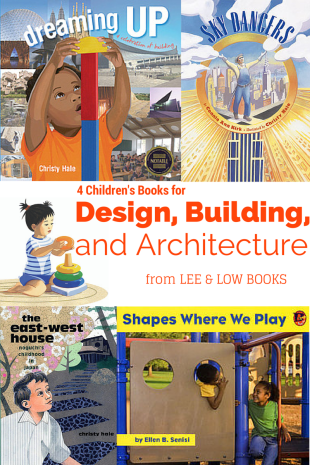 Recommended reading to teach about architecture for students:
Recommended reading to teach about architecture for students:
 Dreaming Up: A Celebration of Building
Dreaming Up: A Celebration of Building
 Sky Dancers
Sky Dancers
 The East-West House: Noguchi’s Childhood in Japan
The East-West House: Noguchi’s Childhood in Japan
 Shapes Where We Play
Shapes Where We Play
STEM + Literacy Activities:
1. Encourage students to examine the differences between architecture and engineering. How do these two fields depend on each other? What is unique about each field? What do architects contribute to building a structure? What do engineers contribute? For a simplified breakdown of the duties of an architect and an engineer, the New School of Architecture + Design has a clear infographic.
2. Have students in small teams research a well-known structure in their community, city, or state (such as a museum, performing arts center, or place of worship). Who built it and when? For what is the structured used? Where is it located? What is it made of? Why were those materials used? What is special about the design? What challenges did the architect have in creating this structure? In addition to online and print resources, students can interview someone who works at the structure, if possible. After research is complete, students can create a model of the structure, design a poster advertising it to tourists, or write and present a report on the structure to the class.
3. Ask students to imagine that they are architects assigned to design a new school. Describe the materials you will need and what the building will look like. As you think about the design and materials needed, consider the types of spaces children in the school will need to learn, read, eat, study; what you will need to make the building safe and sturdy; and what will make it an attractive place in which to learn.
4. Set up a hands on, or sensory, station with materials from home or a local hardware store that are used to build structures. Examples could be a wood spoon for wood, a cooking pot for steel, etc. Have students touch and record the characteristics of each sample material. Why might an architect use steel instead of wood, or bamboo instead of concrete? Students can make a chart of popular building materials to compare the advantages and disadvantages of each. Have students study the physical characteristics (based on sight, touch, sound, and even smell) of brick, wood, bamboo, clay, concrete, steel, glass, iron, rock, straw, recycled materials, and more. For advanced or older students, topics to compare include cost of the material, availability, resiliency in natural disasters, typical lifetime, flexibility and ability to shape the material, environmental friendliness, and beauty/appeal.
5. Have students study the roles that appeal/beauty, safety, and function/purpose play in the design of a structure. Is one preferable over the other? Why? Do these factors all work together or can they be in conflict with one another? Students can look at one specific structure to see how the architect addressed each of these issues. If possible, ask a local architect or professor from an area college to discuss these factors.
6. Watch PBS’s “Building Big,” a five-part miniseries on bridges, domes, skyscrapers, dams, and tunnels. Each one-hour program explores the different type of structures and what it takes to build them. An educator’s guide of activities from PBS is available online.
7. Lead students in a step-by-step activity to create their own geodesic dome, sandcastle, toothpick structure, or floor plan. Instructions can be found online at the archKIDecture website.

Jill Eisenberg, our Resident Literacy Specialist, began her career teaching English as a Foreign Language to second through sixth graders in Yilan, Taiwan as a Fulbright Fellow. She went on to become a literacy teacher for third grade in San Jose, CA as a Teach for America corps member. She is certified in Project Glad instruction to promote English language acquisition and academic achievement. In her column she offers teaching and literacy tips for educators.
Filed under:
Educator Resources,
Holidays and Celebrations Tagged:
architecture,
book activities,
children's books,
Educators,
STEM 

Each week this summer, we are pairing Lee & Low titles to your favorite summer destinations with fun activities!
Our motto this summer: Love Books + Keep Cool + Learn Something New
Your summer outing: the BEACH
Book recommendations:

Surfer of the Century: The Life of Duke Kahanamoku
Questions during reading:
- What is this person’s relationship to the ocean? How does this person’s relationship to the ocean change from the beginning to the end of the story?
- How does this person show appreciation for the ocean?
- How is the ocean/beach a part of this person’s identity?
- Look at a map of the world and locate the island this person is from. What is the capital? What ocean surrounds it? Infer what the climate is like based on the island’s location. What makes this island unique?
- How does this person demonstrate pride in his/her culture?
- How does this person remember home even when far away from home?
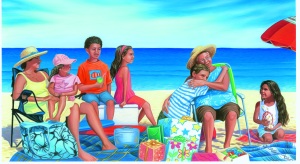 Activity:
Activity:
Create a beach ball collage!
Materials: poster paper, pencil, markers, colored pencils or crayons, assortment of magazines
- Using a pencil, draw a large circle on the poster paper.
- Inside the circle, draw a small circle about the size of a quarter somewhere off center.
- Draw a curved line from the small circle to the large circle. Repeat drawing lines until you have six lines and six spaces. Each curved line should face the same direction in a pinwheel formation. The lines will be different lengths and can be varying widths apart from each other (this will give it a 3-D effect).
- With a black marker, trace over the pencil so the beach ball stands out on the poster paper.
- Optional: lightly fill in each segment a different color using colored pencils or crayons.
- Select and cut out pictures and words from the assortment of magazines to answer the question: What makes the beach special to you?
- In each of the six beach ball segments, draw or glue pictures. In one section, think about what foods you eat while at the beach. What animals have you seen at the beach? What do you always make sure to pack before you head out? What activities do you like to do at the beach? Who do you play with while there?
For further reading: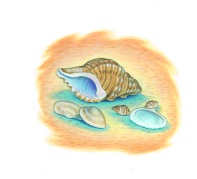
 Jill Eisenberg, our Resident Literacy Expert, began her career teaching English as a Foreign Language to second through sixth graders in Yilan, Taiwan as a Fulbright Fellow. She went on to become a literacy teacher for third grade in San Jose, CA as a Teach for America corps member. She is certified in Project Glad instruction to promote English language acquisition and academic achievement. In her column she offers teaching and literacy tips for educators.
Jill Eisenberg, our Resident Literacy Expert, began her career teaching English as a Foreign Language to second through sixth graders in Yilan, Taiwan as a Fulbright Fellow. She went on to become a literacy teacher for third grade in San Jose, CA as a Teach for America corps member. She is certified in Project Glad instruction to promote English language acquisition and academic achievement. In her column she offers teaching and literacy tips for educators.
Filed under:
Educator Resources,
Holidays and Celebrations,
Summer Tagged:
children's books,
close reading,
diversity,
Educators,
holidays,
Reading Aloud,
reading comprehension,
summer,
summer reading 

 – that align with 7 core values and
– that align with 7 core values and
 Veronica has a degree from Mount Saint Mary College and joined LEE & LOW in the fall of 2014. She has a background in education and holds a New York State childhood education (1-6) and students with disabilities (1-6) certification. When she’s not wandering around New York City, you can find her hiking with her dog Milo in her hometown in the Hudson Valley, NY.
Veronica has a degree from Mount Saint Mary College and joined LEE & LOW in the fall of 2014. She has a background in education and holds a New York State childhood education (1-6) and students with disabilities (1-6) certification. When she’s not wandering around New York City, you can find her hiking with her dog Milo in her hometown in the Hudson Valley, NY.




















I was just thinking about Dreaming Up again this week. I used it with first grade last year http://readingtl.blogspot.com/2013/10/dreaming-up.html and will use it again this year. I may even use it with other grades too. We are in the midst of a large scale remodel of our school building so the students have been hearing the word architect a lot and are seeing construction on a daily basis from the playground. I will have to get my hands on the other books too. Thanks for the titles!
Hi Crystal-
Thank you for sharing! We love the structures your first graders made after reading Dreaming Up. We are always excited to learn how our titles such as these are being applied in the classroom and are always impressed with the creativity and rigor teachers come up with to engage and challenge learners. Please let us know how you use it again this year or feel free to share the link if you reflect the experience on your blog!